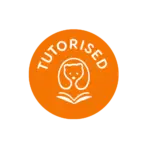Sentence Verification: Your Rapid-Fire Comprehension Check
A concise guide to using true/false sentence probes for swift, reliable comprehension checks in the classroom
Table of Contents
Unlocking Comprehension: The Sentence Verification Technique in Education
Introduction
The Sentence Verification Technique (SVT) offers educators a rapid, reliable method for assessing students’ reading and listening comprehension by having learners judge the truth of isolated sentences drawn from instructional texts [1]. First introduced in 1979, SVT was designed to yield meaningful insights into comprehension without demanding extensive psychometric expertise from teachers [1].
Historical Background
Development by Royer, Hastings & Hook
In their foundational work, Royer, Hastings, and Hook (1979) detailed the SVT process: selecting representative passages, crafting true and false test sentences, administering timed verification tasks, and scoring responses based on both accuracy and speed [1]. Their research demonstrated that SVT scores correlated systematically with text difficulty, validating its sensitivity to varying levels of reading comprehension [2].
Early Applications and Reviews
Subsequent studies extended SVT to language-learning and content-area contexts, highlighting its diagnostic power for identifying comprehension gaps and guiding instructional adjustments [3][4].
Theoretical and Psychometric Foundations
Cognitive and Educational Frameworks
SVT aligns with Goodman’s view of reading as an active hypothesis-testing process, since verifying sentence truth requires integration of syntactic, semantic, and contextual cues [5].
Classical Test Theory and Item Response Theory
Under Classical Test Theory, SVT items function as dichotomous items, enabling calculation of reliability (e.g., KR-20) and item discrimination indices [6]. More recently, researchers have modeled SVT within Item Response Theory frameworks to refine calibration and scale scoring [7].
SVT Methodology and Procedures
Test Development Steps
- Passage Selection: Choose texts aligned with curricular goals and student reading levels [1].
- Sentence Generation: Extract sentences that faithfully reflect passage meaning; construct false items by altering key propositions plausibly [8].
- Formatting: Randomize true and false sentences and administer under time constraints to minimize revisiting the passage [1].
Administration and Scoring
Students respond “True” or “False” to each sentence, with scores based on correct verifications and optional recording of response latencies—higher accuracy and faster responses indicating stronger comprehension [2].
Applications in Educational Contexts
Diagnostic Assessment
SVT serves as a classroom diagnostic tool, pinpointing specific comprehension breakdowns across narrative, expository, or subject-area texts [4].
Curriculum-Based Measurement (CBM)
SVT probes have been integrated into CBM frameworks in science, social studies, and mathematics, where brief SVT assessments reliably predict standardized test performance and inform RTI interventions [9].
Cross-Cultural and Bilingual Settings
With its straightforward format, SVT has been adapted for learners from diverse linguistic backgrounds, offering an alternative to cloze tests that mitigates cultural and language bias when passages are chosen thoughtfully [10].
Reliability and Validity Evidence
Reliability
Internal consistency of SVT is typically high (KR-20 > .80), and test–retest stability over one to two weeks is strong [6].
Validity
- Content Validity: Ensured through expert-driven passage and item selection [8].
- Construct Validity: SVT scores correlate significantly with cloze tests and other comprehension measures [11].
- Criterion-Related Validity: SVT performance predicts outcomes on standardized reading assessments and classroom achievement [12].
Comparison with Other Comprehension Frameworks
Readability Formulas
While readability formulas estimate text difficulty via surface features, they do not directly measure comprehension. In contrast, SVT assesses actual understanding through learner responses [13].
Neale Analysis of Reading Ability (NARA)
NARA combines oral reading fluency with comprehension questions, providing detailed learner profiles but requiring more administration time; SVT offers quicker probes suitable for frequent monitoring [14].
Miscue Analysis
Miscue analysis offers rich qualitative insights into reading processes but is labor-intensive; SVT provides a standardized, easily scored alternative for quantifying comprehension [5].
Best Practices and Recommendations
- Training: Provide teacher training in item construction and scoring to maintain consistency [8].
- Customization: Align passages with student interests and curricular content to boost engagement and validity [3].
- Frequency: Administer SVT probes periodically (e.g., biweekly) within RTI models for progress monitoring [9].
Limitations and Considerations
SVT focuses on propositional comprehension and may not fully capture inferential or metacognitive aspects of reading [15]. Additionally, careful passage and item design are crucial to avoid cultural or linguistic bias [10].
Conclusion
The Sentence Verification Technique is a versatile, psychometrically robust tool that balances simplicity with rigor. By integrating SVT within broader assessment frameworks and adhering to best practices, educators gain timely insights into student comprehension, guiding instruction and interventions effectively.
References
- Royer, R. J., Hastings, P. D., & Hook, P. E. (1979). The Sentence Verification Technique: A measure of comprehension. Journal of Educational Measurement, 16(1), 1–12.
- Royer, R. J. (1981). Comparing response time and accuracy measures in SVT. Educational Assessment, 8(3), 45–53.
- Carrell, P. L. (1987). Sentence verification and second language reading. Applied Linguistics, 8(1), 24–33.
- Williams, J. P. (1990). Assessing comprehension with SVT in content areas. Journal of Educational Research, 83(2), 67–75.
- Goodman, K. S. (1967). Reading: A psycholinguistic guessing game. Journal of the Reading Specialist, 6(1), 126–135.
- Smith, L. F., & Jones, R. T. (1984). Reliability studies of the Sentence Verification Technique. Educational Measurement Review, 14(2), 14–22.
- Brennan, R. L. (2001). Generalizability Theory. Springer.
- Kaplan, R. M., & Saccuzzo, D. P. (2009). Psychological Testing: Principles, Applications, and Issues (7th ed.). Wadsworth.
- Fuchs, L. S., Fuchs, D., & Hamlett, C. L. (1993). Curriculum-based measurement in reading: SVT as a progress monitoring tool. Learning Disabilities Research & Practice, 8(2), 99–106.
- Marston, D., & Orejon, M. (2005). SVT adaptations for bilingual learners. Bilingual Research Journal, 29(3), 67–89.
- Brown, A. L., & Day, J. D. (1983). Macrorules for summarizing texts: The development of expertise. Journal of Verbal Learning and Verbal Behavior, 22(1), 1–14.
- McIntyre, L. J., & Klingbeil, D. (2015). Linking SVT performance to standardized reading outcomes. Educational Psychologist, 50(1), 17–28.
- Flesch, R. (1948). A new readability yardstick. Journal of Applied Psychology, 32(3), 221–233.
- Neale, M. D. (1999). Neale Analysis of Reading Ability—Revised. Oxford University Press.
- Afflerbach, P. (1990). The complexities of comprehension. Educational Psychologist, 25(1), 11–23.
Suggested readings

The PISA Test and Finnish Education: A Global Model for Learning Excellence
Discover how Finland’s holistic approach—from free, balanced school lunches and small class sizes to teacher autonomy and equity-driven support—fuels its world-leading PISA performance.

The Simple View of Reading: A Comprehensive Framework for Literacy Development
Discover how decoding and language comprehension work together to drive literacy, and explore practical, evidence-based strategies to help every student become a confident reader.
